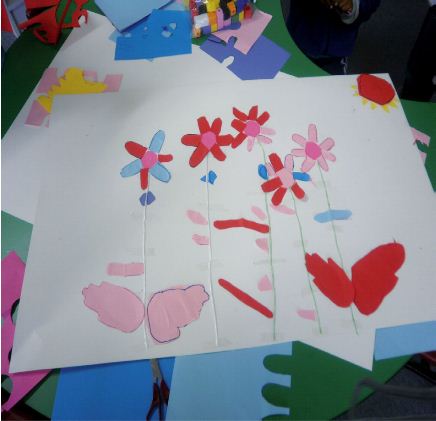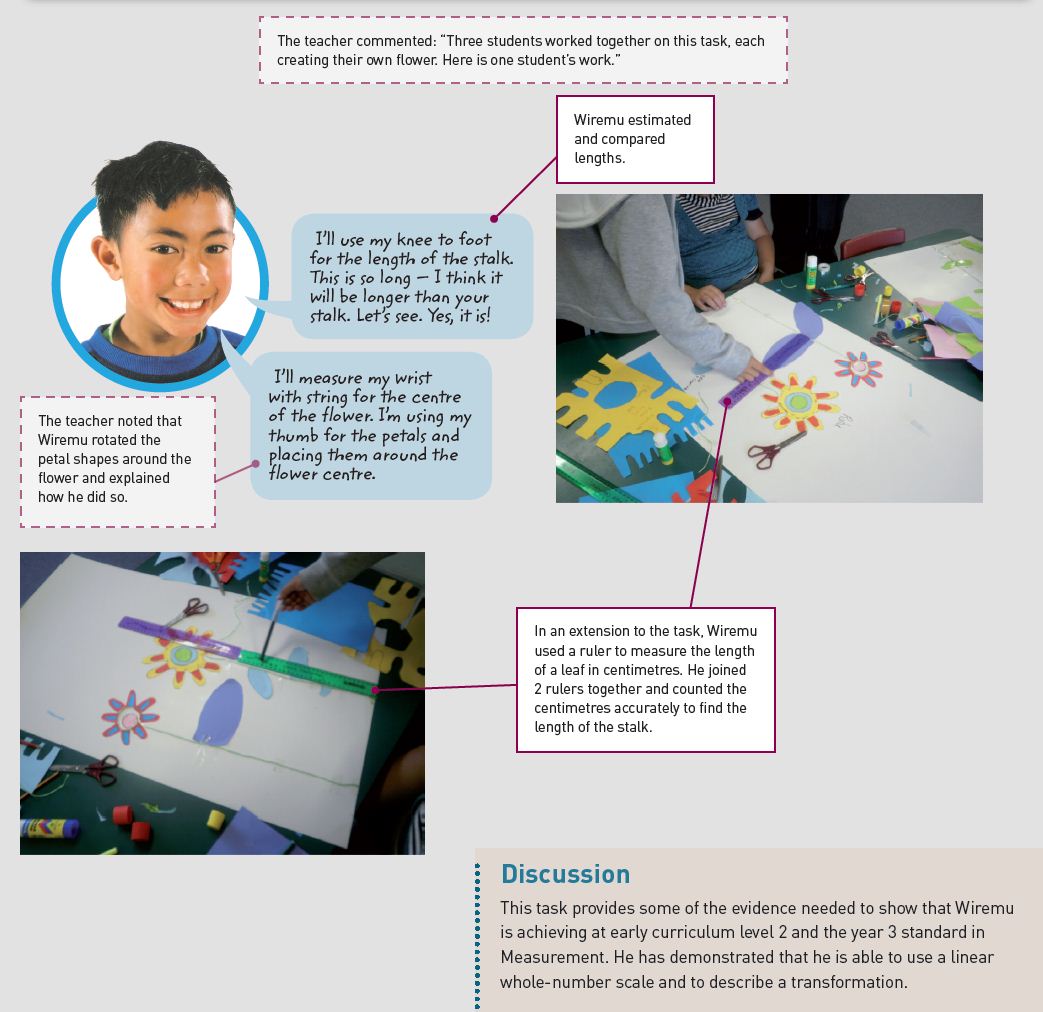
Body Garden: Illustrating the year 3 standard
The following examples of student work illustrate achievement at the mathematics standards for year 3.
In this task, groups of 3–4 students made a flower garden and measured parts of their body to represent the flowers, stalks, leaves, and grass. The task relates to achievement objectives for Geometry and Measurement from the mathematics and statistics learning area in The New Zealand Curriculum.
The Task
Body Garden
Provide string, scissors, coloured paper, and other suitable material for the task. Encourage students to talk about movement when they are arranging their shapes (e.g., rotating, translating, and reflecting shapes). Ask them to record and compare the lengths and widths of petals, stalks, leaves, and so on.
Use string to measure a part of your body (e.g., elbow to wrist) to use as the length of the flower stalk.
On coloured paper, trace around other parts of your body (e.g., fingers) and cut out and paste these onto your picture as petals, leaves, and the flower’s centre.
Some features of students’ work used to make judgments in relation to the mathematics standards are described below. There is also an illustration of the year 2 standard for this task.
| New Zealand Curriculum: Level 2 | National Standards: After three years at school |
|
In solving problems and modelling situations, students will:
|
|
|
Geometry and Measurement
|
Geometry and Measurement
|
Hover over the image to zoom a section. Click on the image to enlarge it. Click again to close.
PDF of this task and Illustrations of the year 2 and 3 standards (1.35MB)

